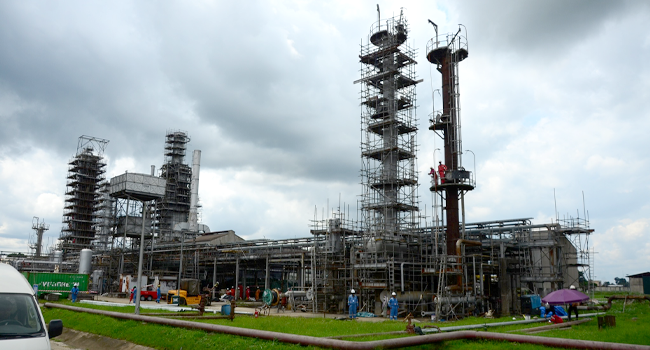The Port Harcourt Refining Company’s (PHRC) resumption of operation in December 2023, after years of dormancy and rehabilitation, marks a significant moment for Nigeria’s oil sector.
The recommencement of operations at the Port Harcourt refinery comes over two years after the Federal Government approved funding of $1.5 billion (1.2 billion euros) to repair one of its biggest oil refineries.
However, in August, the Minister of State for Petroleum Resources (Oil) Senator Heineken Lokpobiri, said the Port Harcourt refinery will recommence operations in December.
Lokpobiri said this during an inspection tour of the rehabilitation work at the PHRC Ltd. plant
“Our objective in coming here today is to ensure that in the next few years, Nigeria stops fuel importation. From what we have seen here today, Port Harcourt Refinery will come on board by the end of the year,” he said in August.
The government chose an Italian firm Maire Tecnimont to carry out the repair work at the Port Harcourt facility which has a capacity of some 210,000 bpd.
“We are happy to announce that the rehabilitation of productivity refinery will commence in three phases,” the then-Minister of Petroleum (State) Timipre Sylva told reporters.
However, amidst the celebratory atmosphere, a critical analysis reveals a complex picture filled with both promising progress and lingering challenges.
Rekindling a Dormant Engine:
For years, the Port Harcourt Refinery, like its counterparts in Warri and Kaduna, lay dormant, choked by underperformance and plagued by protracted maintenance projects. This dependence on imported refined products exposed Nigeria to volatile global oil prices and hampered its economic diversification. The restart therefore signifies a tangible step towards regaining control over a crucial segment of the oil and gas value chain.
Deciphering the Capacity Conundrum:
While the combined capacity of these four refineries stands at 445,000 bpd, actual processing levels are likely to be much lower, at least initially. Technical hiccups, ramp-up delays, and potential feedstock shortages could constrain production, tempering expectations of immediate abundance. Additionally, the question of long-term sustainability remains, as future viability hinges on effective maintenance, efficient operations, and a conducive policy environment.
Beyond Port Harcourt: Unveiling the Wider Canvas:
The Port Harcourt restart, though crucial, is just one piece of a larger puzzle. The revitalization of all four refineries will be necessary to achieve oil-sector autonomy and unlock its potential for fueling broader economic growth. This necessitates significant investments, not just in physical infrastructure but also in institutional reforms, including streamlining bureaucratic processes, attracting skilled personnel, and fostering transparency in resource management.
A Glimmer of Hope, a Cautious Optimism:
The Port Harcourt refinery’s restart offers a glimmer of hope, a tangible sign of progress in Nigeria’s quest for domestic refining self-sufficiency. However, it’s crucial to view this development not as a triumphant finish line but as a significant milestone on a long and arduous journey. Continued commitment, meticulous planning, and unwavering resolve are key to ensuring this initial spark ignites a sustainable refinery renaissance for Nigeria.

